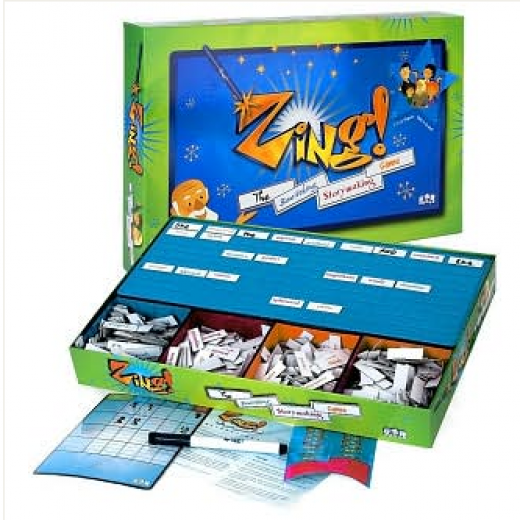Deep POV: Plunging off the Cliff by Kay Keppler
 Welcome to the next installment of craft posts by monthly guest columnist, Kay Keppler. Today she’ll share about setting and how to make them work for your story. As you dive into your NaNoWriMo book, keep these tips in mind.
Welcome to the next installment of craft posts by monthly guest columnist, Kay Keppler. Today she’ll share about setting and how to make them work for your story. As you dive into your NaNoWriMo book, keep these tips in mind.
You can contact Kay through the Writer’s Fun Zone or at kaykeppler AT yahoo DOT com to ask questions, suggest topics, or tell her she’s off her rocker. (She let me say that!)
***
We’ve all heard about POV — that’s point of view, the angle of the character who’s telling or seeing the scene. But for all you base-jumping, moto-crossing, ice-climbing literary extremists out there, now there’s deep POV. Yeah, yeah, yeah, I hear you say. Deep POV. How much deeper can POV go? It’s already POV. As in, so not omniscient.
Writers want to use deep POV for the same reason that daredevils want to fling themselves off cliffs grounded only by a rubber band attached to their big toes. It’s about the rush. It’s about digging down and finding the emotion. OK, I can find emotion digging down into a big bucket of popcorn at a Sandra Bullock movie, but we’re not talking about me here. We’re talking about people who want to strip it down to the grain. People like writers.
So let’s look at deep POV, what it is, and how we get it.
No pronouns need apply
For starters: deep POV is not about pronouns. Here’s how it works.
Every scene has a stimulus and a response, repeated until the scene ends. Take my example stimulus: I wrap a rubber band around my big toe and jump off a cliff. The response: I puke my guts out. Bounce up, repeat.
Not the best example. Here’s a better one. The stimulus: The killer pulls out his gun. What’s the response? Our heroine, Sarah — our POV character — ducks behind the stone wall. This response (our heroine ducking) then stimulates the next action: what does the killer do next?
Four parts = harmony
Deep POV comes in when we show readers our heroine’s (our POV character’s) response — how and why she ducked and what she felt. A character’s response to the stimulus has four parts:
- emotion
- thought
- decision
- action
and they happen in that order. She won’t jump behind the wall (action) and then feel fear (emotion). She feels the fear first, she thinks what her options are, she decides ducking behind the wall is best, and then she moves. If you work with these four elements — and work them backwards — you’ll find your way to deep POV.
Start with #4: action
Showing only the action component of the response essentially gives us an omniscient POV.
The killer pulled out his gun. (stimulus) Sarah jumped behind a stone wall. (response)
The killer crept forward. (stimulus) Sarah heard a twig snap, and she inched back toward the forest, searching the road for the police. (response)
Notice the use of the word “heard.” Sense words such as heard, felt, saw, or smelled distance the reader. They are not part of deep POV. We’ll get to those in a sec.
Add #3 and #2: decision and thought
You might not always have one thought and one decision running in tandem. A character might have many thoughts and only one decision. Thoughts and decisions together are internalizations.
The killer pulled out his gun. (stimulus) He’d been hunting her since sunrise, and she didn’t know how much longer she could run. (thought) But maybe she could hide until help came. (decision) Sarah jumped behind a stone wall. (response)
The killer crept forward. (stimulus) Sarah heard a twig snap. She had to stay focused, she thought. (thought) She inched back toward the forest, searching the road for the police. (response)
Finally, add #1: emotion
How much emotion you add probably depends on what kind of book you’re writing, as well as what scene you’re in.
The killer pulled out his gun. (stimulus) She sobbed, gasping for breath. (emotion) He’d been hunting her since sunrise, and she didn’t know how much longer she could run. (thought) But maybe she could hide until help came. (decision) Sarah jumped behind a stone wall. (response)
The killer crept forward. (stimulus) Sarah heard a twig snap. He was relentless—she’d never get away! (emotion) She had to stay focused, she thought. (thought) She inched back toward the forest, searching the road for the police. (response)
No telling!
Next we strip out anything that’s “telling”—anything that distances the character from the reader. These include the heard, felt, saw, or smelled words, but also words such as thought or recalled that have readers watching Sarah’s responses rather than feeling them.
The killer pulled out his gun. (stimulus) She sobbed, gasping for breath. (emotion) He’d been hunting her since sunrise. How much longer could she run? (thought) Could she hide until help came? (decision) Sarah jumped behind a stone wall. (response)
The killer crept forward. (stimulus) A twig snapped. He was relentless—she’d never get away. (emotion) Just stay focused. (thought) She inched back toward the forest, searching the road for the police. (response)
Add some personality
That’s basically it as the process to get to deep POV—but we should still give this section one more pass to add a little bit of Sarah’s personality to her dilemma.
The killer pulled out his gun. She sobbed, gasping for breath. He’d been hunting her since sunrise. How much longer could she run? If only she’d gone to the gym more often! Regrets wouldn’t help her now, but could she hide until the cops came? Sarah jumped behind a stone wall.
The killer crept forward. A twig snapped. He was relentless—she’d never get away. Just stay focused. Just stay alive, minute by minute. She inched back toward the forest, searching the road for the police.
Going deeper
This simple example is just to demonstrate how deep POV works. Of course, nothing is ever absolute, and deep POV can get much deeper than this when you’re working in your own scenes. But this example should help you see how you can use deep POV to strengthen your story, improve your pacing, and help readers engage with your characters.
But let me warn you, you daredevil you, if you’ve got a rubber band wrapped around your big toe, stay away from the cliffs. There’s no POV down there. You can trust me on this.
Thanks to Liz Pelletier for the expanding example format, Jack Bickham for explaining four-part harmony so well, and Suzanne Brockmann for being so awesome with deep POV.
***
 Kay Keppler (www.kaykeppler.com) is an author (Zero Gravity Outcasts, Betting on Hope) and editor of fiction and nonfiction (Angel’s Kiss, Outsource It!) who lives in northern California. Contact her here or at kaykeppler@yahoo.com to ask questions, suggest topics, or if you prefer, complain.
Kay Keppler (www.kaykeppler.com) is an author (Zero Gravity Outcasts, Betting on Hope) and editor of fiction and nonfiction (Angel’s Kiss, Outsource It!) who lives in northern California. Contact her here or at kaykeppler@yahoo.com to ask questions, suggest topics, or if you prefer, complain.







Hi Kay, Beth and I were talking about the use of “his dad” and just plain “dad” in the deep POV of the male character. What are you thoughts about that usage. Example: “He watched the nurse turn his dad’s wheelchair around, push him away.” Or would it be, “Watching the nurse turn dad’s wheelchair around, she pushed him away,”? Which one works?
That is an excellent question, and that’s one of the hardest choices to make. But here’s what I’d say: If the sentence is phrased, “He watched the nurse turn his dad’s wheelchair around, push him away,” then the addition of “his” makes sense, because the “He watched” phrase already puts the reader a bit out of the scene—the reader is looking at the scene from some distance and isn’t really in the protagonist’s head. And the same goes for “Watching the nurse turn…,” because the reader is still looking at the scene as a whole from a distance, and you’d still need the “his” before “dad’s.” To get to that deep POV place, you need to get the watching out of it so the reader is living the scene with or through the protagonist. So deep POV would be more like “The nurse turned dad’s wheelchair around and pushed him away.” That gets rid of the “his” before dad. That phrasing also sounds like the passage would either be written in the first person or be in a thought process type of scene, so perhaps that doesn’t work as well here for what you want to do. Good luck!